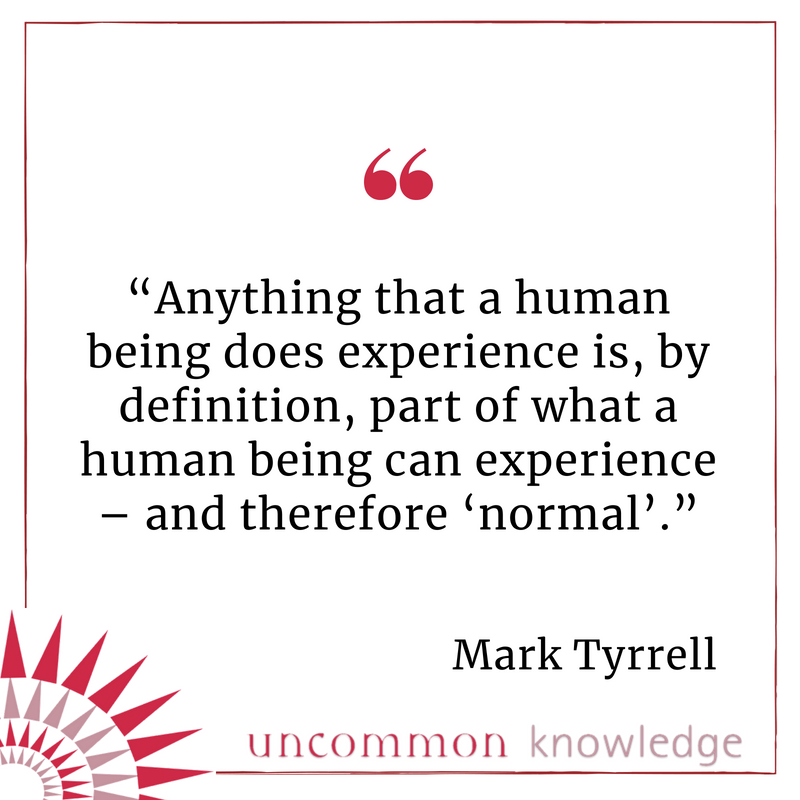
When treating anxiety, relieving the 'worry about the worry' can start to relieve the pressure
Sheila came to see me because she couldn’t seem to stop the obsessive thought that her coworkers, friends, and even complete strangers on the street were judging her walk, clothing, laugh, and, well, everything about her.
“The weird thing, Mark,” she told me, “is that I know, logically, that’s probably unlikely. So then I just feel like a freak that I can’t stop feeling so self conscious all the time.”
When we worry about worrying
You may have noticed that your anxiety clients often actually have two problems:
- The emotional problem they came to see you about
- Worry about having that problem.
But the fact is, emotional disturbances are entirely… normal.
For instance, I gently reminded Sheila that some self consciousness is actually essential to human interaction and empathy. It means we have the capacity to enter the minds of other people and imagine how they might feel and think.
Prefer to watch instead?
“Self consciousness,” I suggested, “is the marker that shows we can exercise human understanding of others. It only becomes a problem when it starts to happen more than needed.” I went on to admit that I occasionally feel a bit self conscious myself.
For Sheila, the idea that self consciousness might be
- something that most people feel from time to time
- not necessarily always a bad thing
…was extremely comforting.
We want clients to feel normal because they are normal. Anything that a human being does experience is, by definition, part of what a human being can experience – and therefore ‘normal’. Sometimes a large part of your therapy consists of helping your client overcome the ‘feeling like a freak’ effect that afflicts so many lives.
3 Interventions for Treating Anxiety
1. Remember that normalizing is not minimizing
No one likes to feel that something that is seriously troubling them has been brushed aside as irrelevant or dismissed as just run of the mill.
Helping a client feel normal about their anxiety isn’t about downplaying the intensity of their worries with an “Oh, don’t worry! Everyone feels like that!” This will only make them feel that you don’t really understand.
We need to let our clients know that we not only know but also understand how bad it seems to them, such as when I revealed to Sheila that I too experience self consciousness. You don’t need to falsely claim you suffer from the same issue or reveal personal details if you’re not comfortable doing so.
But you can feed back common symptoms of the issue to show you understand it. For example, discussing the morning exhaustion and over-dreaming experienced during depression.
Until we have demonstrated this understanding, any mollifying comment or interpretation we offer will just seem patronizing. Spend time listening and sympathizing before you attempt to frame the problem as non-freakish.
2. Put the problem in context
If we can identify the problem as part of a familiar, even common, pattern rather than some shameful one-off weirdness, then our client gets a chance to see that they are not freakish and that their problem means they’re human, not crazy.
For example, Clarice told me she thought she was crazy for suffering emetophobia (fear of vomiting). I spent some of the session talking about emetophobia in general – how other people experience it, how surprisingly common it is, how it normally develops, and so on. And I discussed other cases I’d seen of it.
This allowed me to indirectly demonstrate that fear of vomiting is part of the general human condition rather than a one-off freak aberration unique to her.
3. Identify the function of the problem
Every human psychological problem can be viewed as functional and adaptive in a particular context or to some degree. What does this mean?
Consider this list:
- Checking things once, twice, and even thrice is pretty useful when it really matters – such as that child’s car safety belt
- Compulsively gathering food for winter is an example of obsessive behaviour that’s vital for survival
- Worrying is useful sometimes if it makes us more careful (we had to learn to worry that there might be tigers outside the cave!)
- We need to be addicted to learning and helping ourselves and others if we are to make progress in life
- We need to use the imagination as an inventive tool in context – imagination only becomes a problem when it’s uncontrolled (as in psychosis) or misused (as with jealousy or paranoia).
We can view psychological problems as ‘attempted solutions’ that can, ironically, cause problems. This neatly contextualizes even the ‘weirdest’ of problems.
So…
- Obsessive washing could be an ineffective attempt to help a person feel secure and safe
- Terrible jealousy could be an ineffective way of trying to feel loved or secure in your relationship
- Depression is an attempt at shutting down energy for a while until circumstances improve
- Panic attacks are a way of erring on the side of caution by responding as if lots of things are much more threatening than they really are.
By discussing problems in context and looking at them as an attempt to address an important need, we can help normalize otherwise baffling experiences.
I might, for example, say to a man experiencing impotence that erections are supposed to disappear during times of anxiety and stress. This is because stress is a danger signal and when we are in danger, our energies get diverted away from all non-essential activities – such as sex.
For every individual who feels uniquely weird, mad, nuts, or crazy, there are thousands – perhaps millions! – of others feeling and thinking that they too are the ‘only one’. But they never are. And helping our clients feel less alone can move us a long way towards their recovery.











